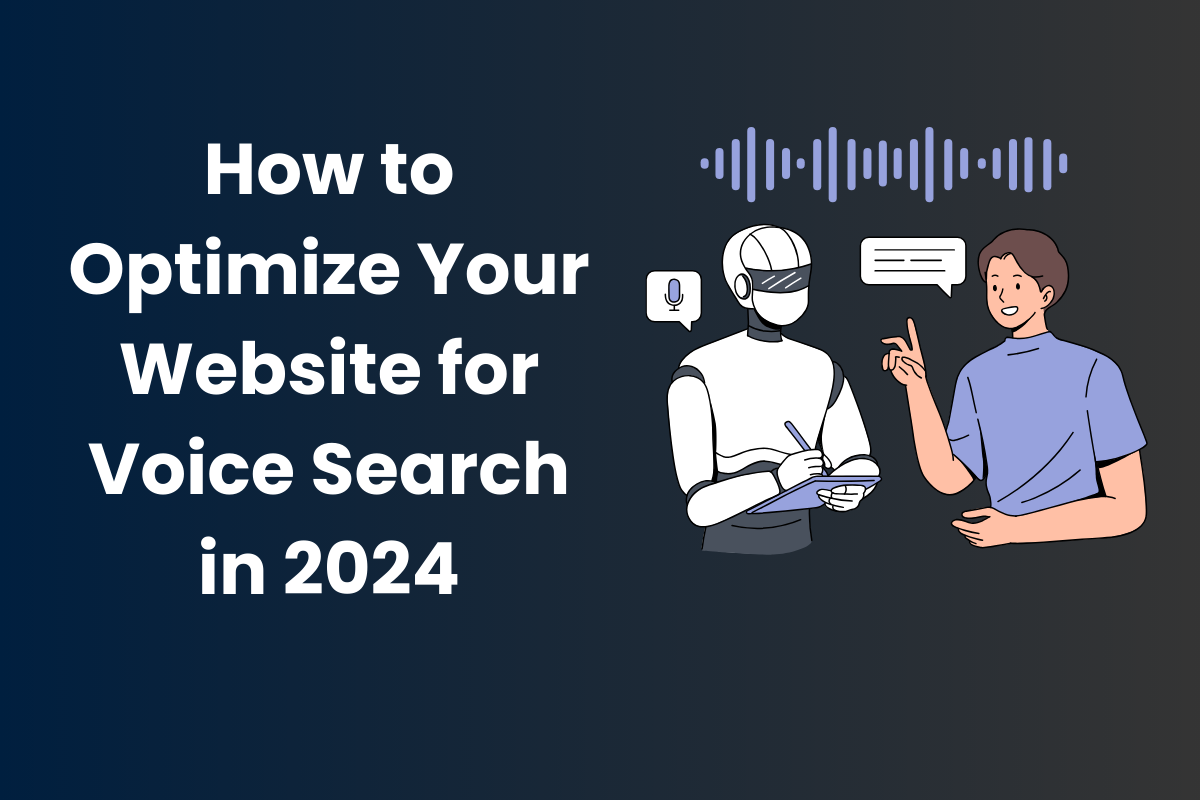Voice search is no longer a futuristic concept—it’s here, and it’s transforming the way users interact with the internet. With the rise of smart speakers, virtual assistants, and voice-activated devices, voice search optimization has become a critical aspect of digital marketing. In fact, 27% of the global online population is using voice search on mobile, and this number is expected to grow in 2024.
If your website isn’t optimized for voice search, you’re missing out on a significant opportunity to attract more traffic and engage with your audience. In this article, we’ll explore what voice search is, why it’s important, and how you can optimize your website for voice search in 2024.
What is Voice Search?
Voice search allows users to perform searches by speaking into a device rather than typing. It’s powered by technologies like natural language processing (NLP) and artificial intelligence (AI), enabling devices to understand and respond to spoken queries.
Popular voice search platforms include:
- Google Assistant
- Amazon Alexa
- Apple Siri
- Microsoft Cortana
Voice search is commonly used for tasks like finding local businesses, checking the weather, setting reminders, and making online purchases.
Why is Voice Search Important in [2024]?
1. Growing Popularity of Voice-Activated Devices
The adoption of smart speakers and voice-activated devices is on the rise. By 2024, it’s estimated that there will be 8.4 billion digital voice assistants in use worldwide. This trend highlights the need for businesses to optimize their websites for voice search.
2. Changing Search Behavior
Voice search queries are often longer and more conversational than text-based searches. For example, instead of typing “best pizza near me,” a user might ask, “Where can I find the best pizza place near me?” This shift in search behavior requires a different approach to SEO.
3. Local Search Opportunities
A significant portion of voice searches are local. Users often ask for directions, business hours, or recommendations for nearby services. Optimizing for voice search can help local businesses attract more customers.
4. Improved User Experience
Voice search provides a faster and more convenient way for users to find information. By optimizing your website for voice search, you can enhance the user experience and stay ahead of the competition.
How to Optimize Your Website for Voice Search
1. Focus on Conversational Keywords
Voice search queries are typically longer and more conversational than text-based searches. To optimize for voice search, focus on long-tail keywords and natural language phrases. For example:
- Instead of targeting “best coffee shop,” target “Where is the best coffee shop near me?”
- Use tools like Google’s Keyword Planner or AnswerThePublic to find conversational keywords.
2. Create FAQ Pages
Voice search often pulls answers from FAQ pages or content that directly answers common questions. Create an FAQ page that addresses questions your target audience is likely to ask. For example:
- “What are the benefits of organic coffee?”
- “How do I brew the perfect cup of coffee?”
Structure your FAQs using schema markup to help search engines understand and display your content in voice search results.
3. Optimize for Local SEO
Since many voice searches are local, it’s essential to optimize your website for local SEO. Here’s how:
- Claim Your Google My Business Listing: Ensure your business name, address, and phone number (NAP) are accurate and consistent.
- Use Local Keywords: Include location-based keywords in your content, such as “coffee shop in [City].”
- Encourage Reviews: Positive reviews can improve your local search rankings and make your business more visible in voice search results.
4. Improve Website Speed
Voice search users expect quick answers. A slow-loading website can hurt your chances of appearing in voice search results. Here’s how to improve your site’s speed:
- Optimize Images: Compress images without sacrificing quality.
- Enable Browser Caching: Store static files locally to reduce load times.
- Use a Content Delivery Network (CDN): Distribute your content across multiple servers for faster delivery.
5. Use Structured Data Markup
Structured data markup (or schema markup) helps search engines understand your content and display it in rich snippets. For voice search, focus on markup types like:
- FAQ: For questions and answers.
- LocalBusiness: For local business information.
- Product: For e-commerce websites.
Use tools like Google’s Structured Data Markup Helper to generate and test your schema markup.
6. Create Concise, Direct Answers
Voice search devices often read out concise, direct answers to user queries. Structure your content to provide clear, straightforward answers. For example:
- Question: “What are the benefits of green tea?”
- Answer: “Green tea is rich in antioxidants, boosts metabolism, and improves brain function.”
Use bullet points or numbered lists to make your content easy to scan and understand.
7. Optimize for Mobile
Since most voice searches are performed on mobile devices, it’s crucial to have a mobile-friendly website. Ensure your site is responsive, loads quickly, and provides a seamless user experience on all devices.
8. Leverage Featured Snippets
Voice search devices often pull answers from featured snippets (also known as “position zero”). To increase your chances of appearing in featured snippets:
- Answer Questions Directly: Provide clear, concise answers to common questions.
- Use Headings: Structure your content with H2 and H3 tags to highlight key points.
- Include Lists and Tables: Search engines often feature listicles and tables in snippets.

Tools to Help You Optimize for Voice Search
1. Google’s Keyword Planner
- Use this tool to find conversational keywords and phrases.
2. AnswerThePublic
- Discover common questions related to your industry or niche.
3. Google’s Structured Data Markup Helper
- Generate and test schema markup for your website.
4. Google’s Mobile-Friendly Test
- Check if your website is optimized for mobile devices.
Real-World Examples of Voice Search Optimization
1. Domino’s Pizza
Domino’s has optimized its website and app for voice search, allowing customers to place orders using voice commands. For example, users can say, “Order my usual pizza from Domino’s,” and the system will process the order.
2. Walmart
Walmart’s voice search optimization enables users to add items to their shopping cart using voice commands. For example, users can say, “Add milk to my Walmart cart,” and the item will be added automatically.
3. The Weather Channel
The Weather Channel’s website is optimized for voice search, providing quick and accurate answers to weather-related queries. For example, users can ask, “What’s the weather like in New York today?” and get an immediate response.
Read More: The Ultimate Guide to E-Commerce Website Development in 2025
Conclusion
voice search optimization the way users interact with the internet, and optimizing your website for voice search is no longer optional—it’s essential. By focusing on conversational keywords, creating FAQ pages, optimizing for local SEO, and improving website speed, you can position your website to rank higher in voice search results.
In 2024, voice search will continue to grow, and businesses that adapt to this trend will have a competitive edge. Start optimizing your website today to attract more traffic, enhance user experience, and stay ahead of the curve.
High-Authority External Links:
- Google’s Guide to Structured Data – A comprehensive resource for implementing structured data markup.
- Moz Local SEO Guide – A detailed guide to optimizing for local SEO.




